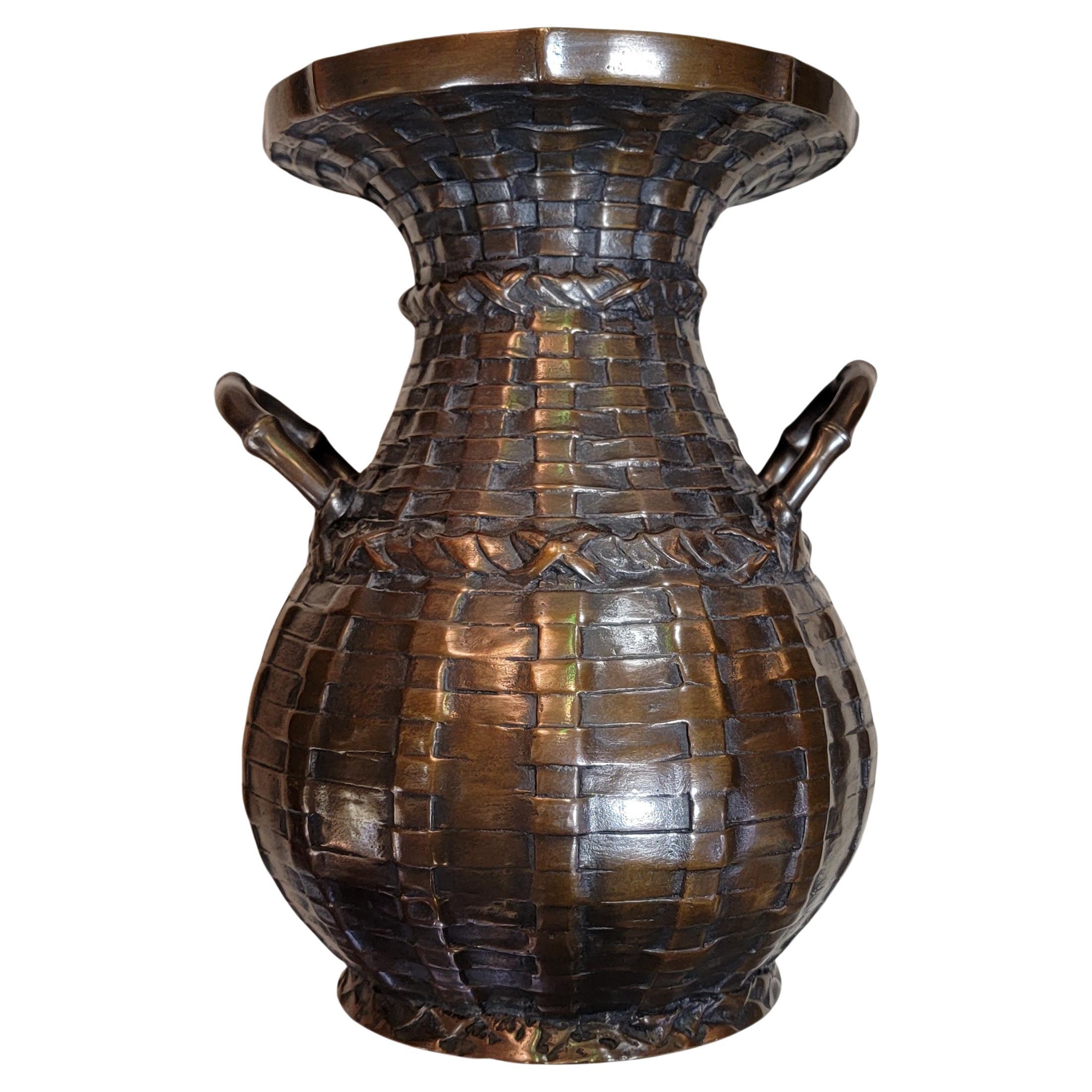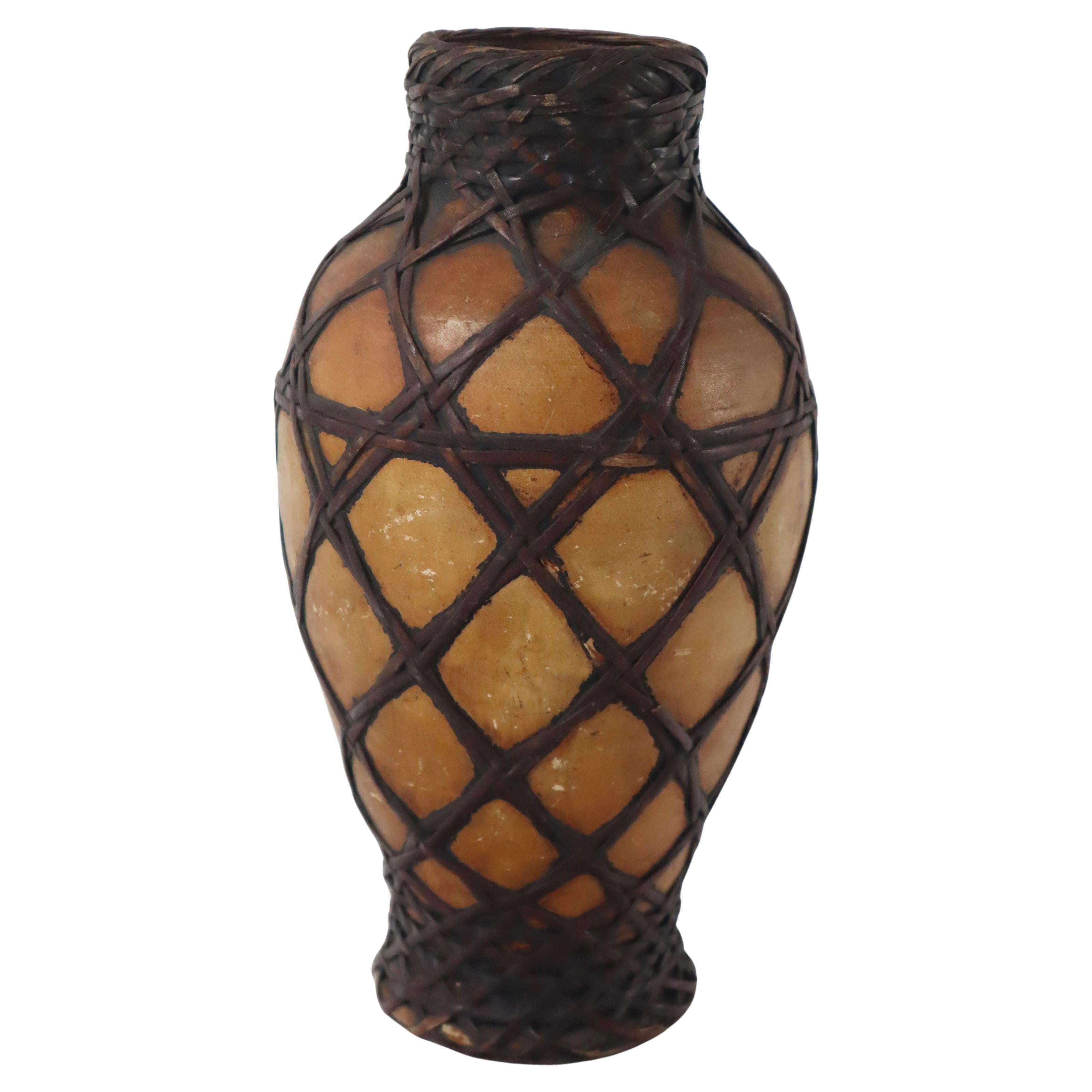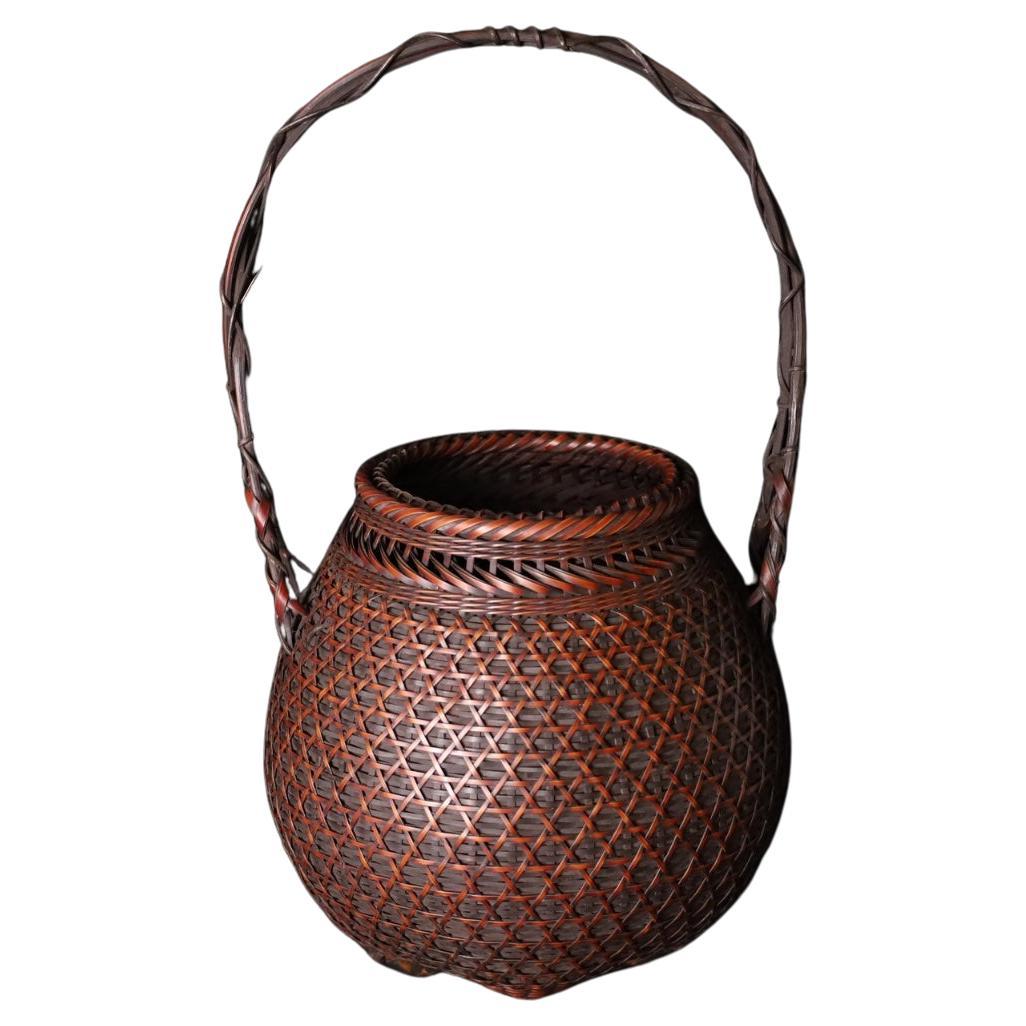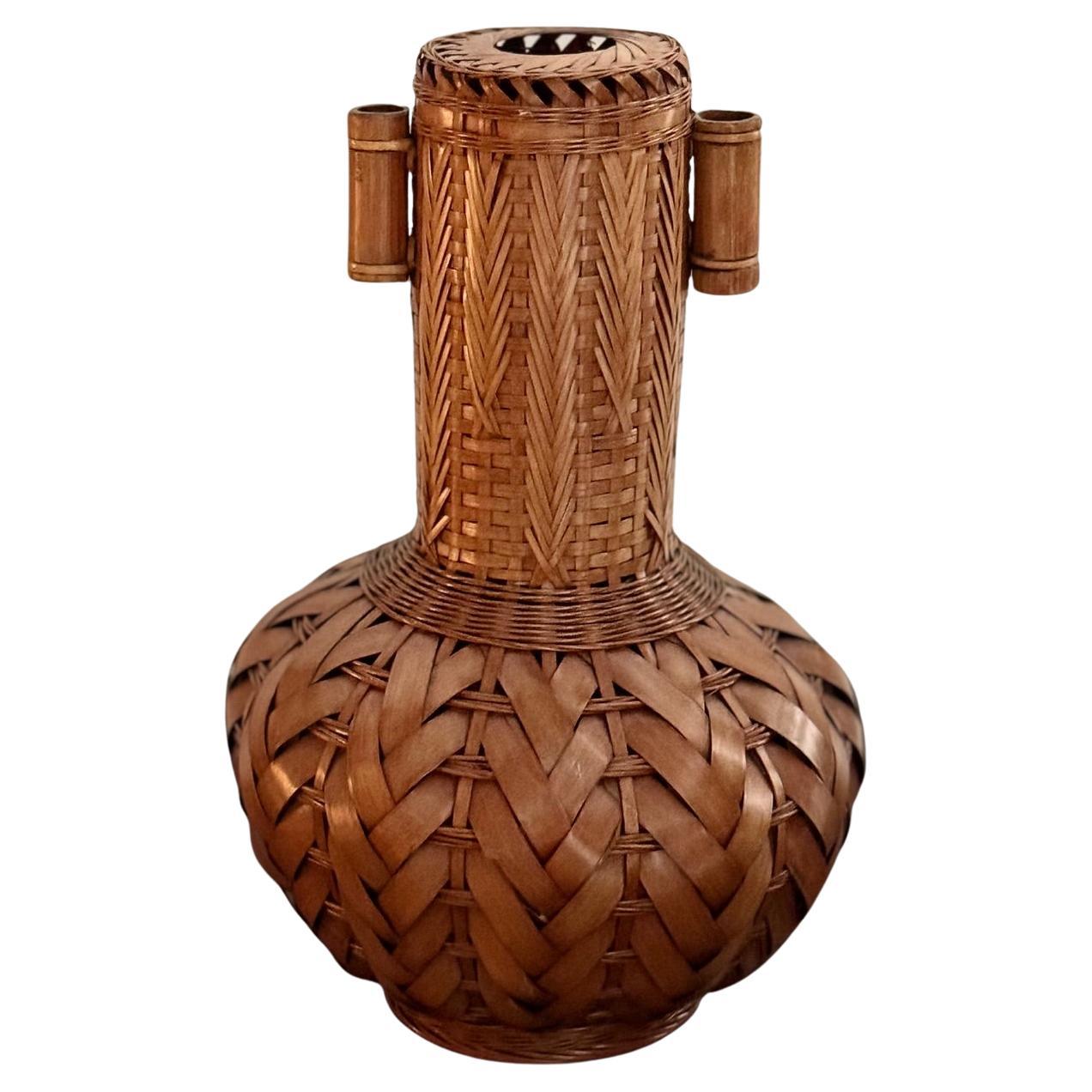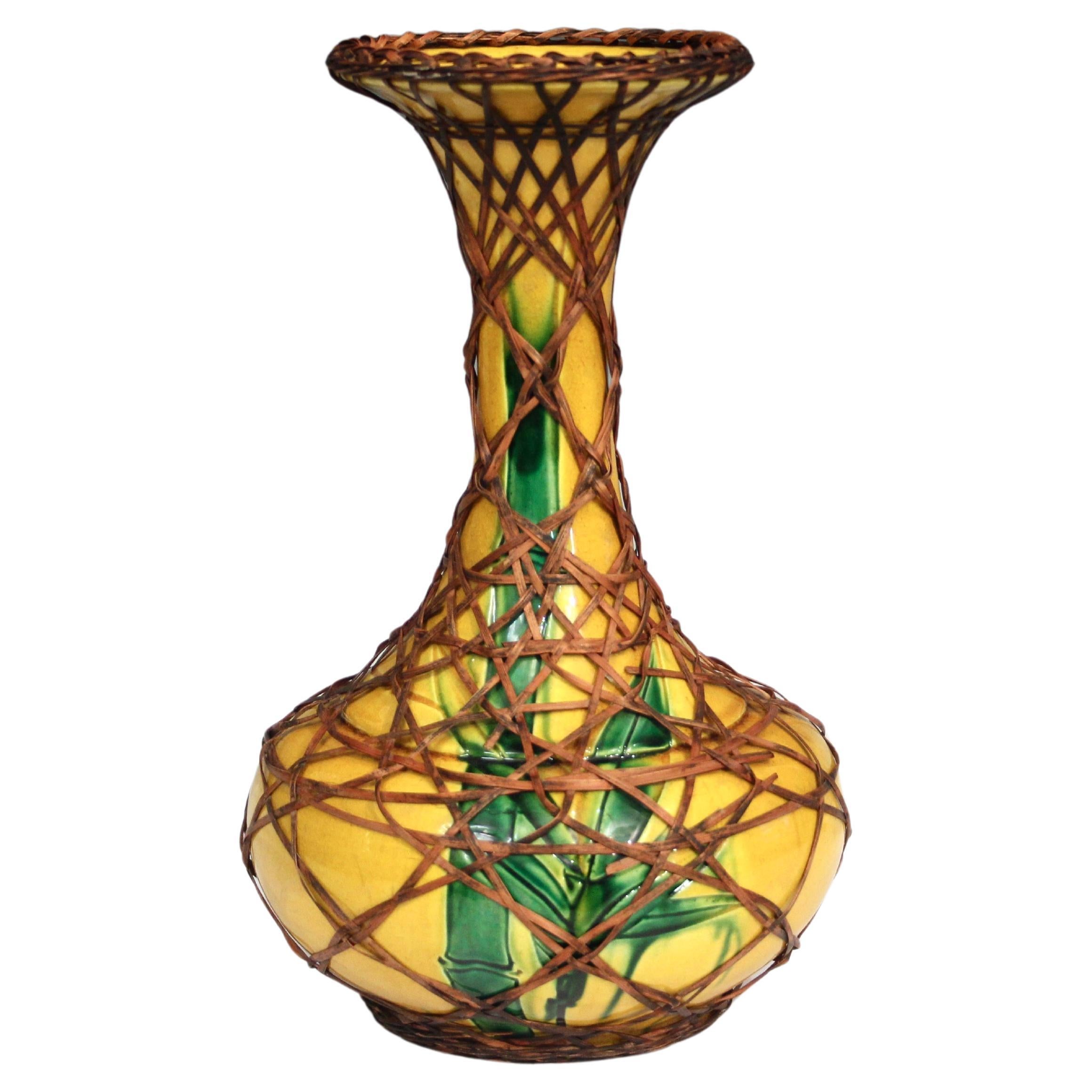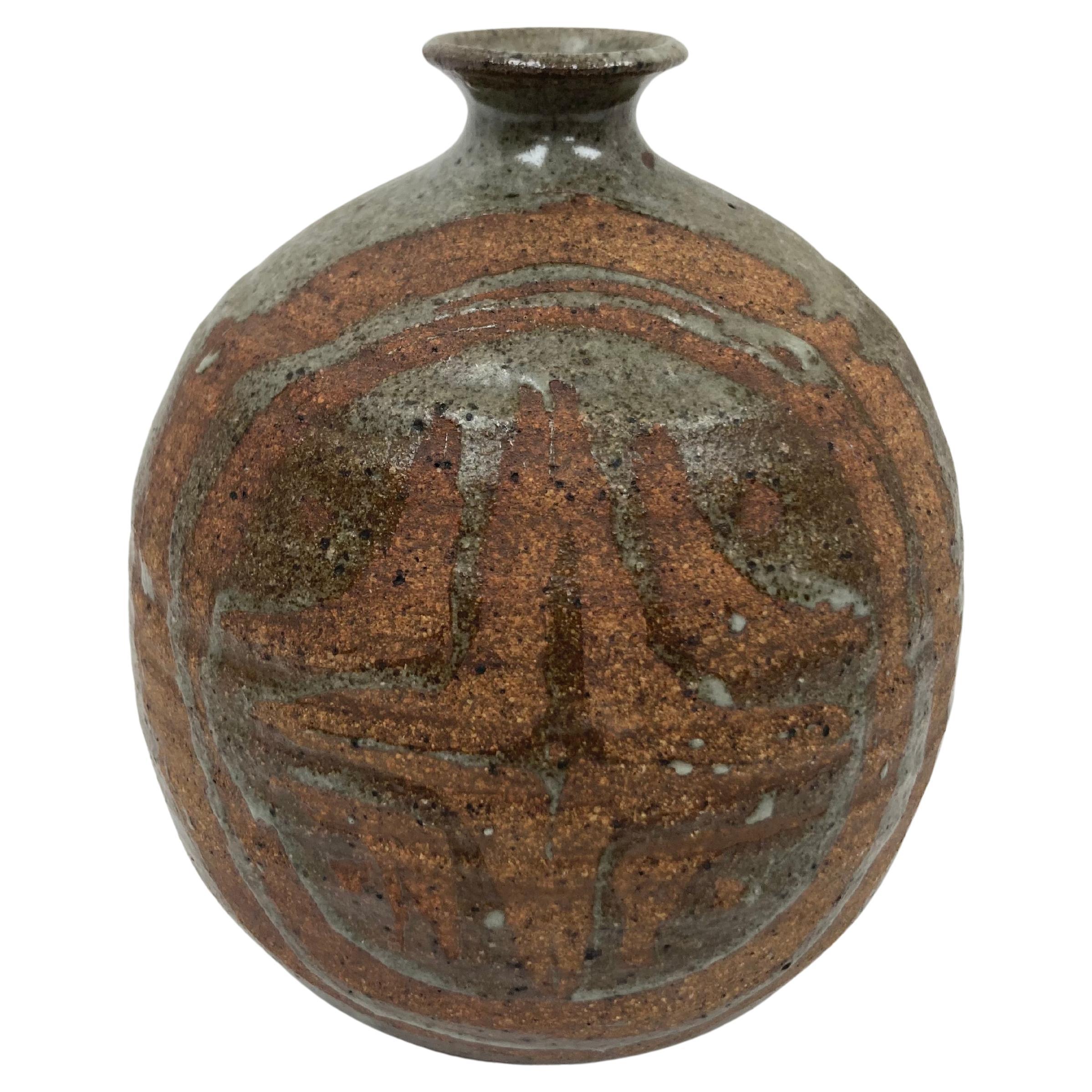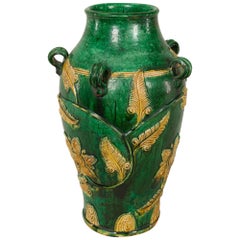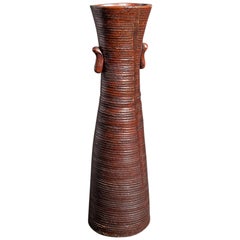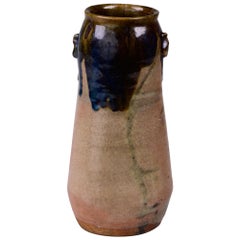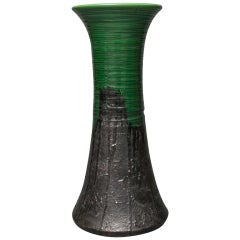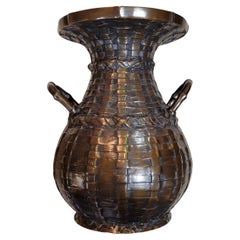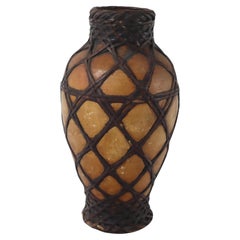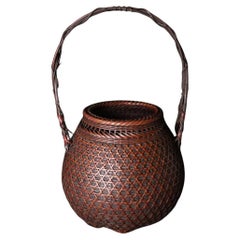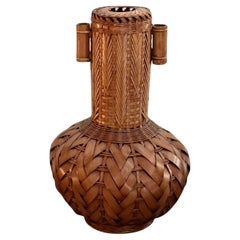Items Similar to Japanese Ceramic Flower Vase in Basket Weave Form
Want more images or videos?
Request additional images or videos from the seller
1 of 9
Japanese Ceramic Flower Vase in Basket Weave Form
$5,800
£4,400.91
€5,032.04
CA$8,101.03
A$9,007.24
CHF 4,703.08
MX$109,640.04
NOK 60,009.30
SEK 56,225.85
DKK 37,555.06
Shipping
Retrieving quote...The 1stDibs Promise:
Authenticity Guarantee,
Money-Back Guarantee,
24-Hour Cancellation
About the Item
Japanese ceramic flower vase in basket weave form
Signed on vase and storage box: Kuraku.
- Dimensions:Height: 12 in (30.48 cm)Diameter: 13 in (33.02 cm)
- Place of Origin:
- Period:
- Date of Manufacture:circa 1930
- Condition:Condition report upon request.
- Seller Location:Hudson, NY
- Reference Number:Seller: A43851stDibs: LU85512521902
About the Seller
5.0
Recognized Seller
These prestigious sellers are industry leaders and represent the highest echelon for item quality and design.
Established in 1971
1stDibs seller since 2008
166 sales on 1stDibs
Typical response time: 13 hours
Associations
The Art and Antique Dealers League of AmericaAntiques Associations Members
- ShippingRetrieving quote...Shipping from: Hudson, NY
- Return Policy
Authenticity Guarantee
In the unlikely event there’s an issue with an item’s authenticity, contact us within 1 year for a full refund. DetailsMoney-Back Guarantee
If your item is not as described, is damaged in transit, or does not arrive, contact us within 7 days for a full refund. Details24-Hour Cancellation
You have a 24-hour grace period in which to reconsider your purchase, with no questions asked.Vetted Professional Sellers
Our world-class sellers must adhere to strict standards for service and quality, maintaining the integrity of our listings.Price-Match Guarantee
If you find that a seller listed the same item for a lower price elsewhere, we’ll match it.Trusted Global Delivery
Our best-in-class carrier network provides specialized shipping options worldwide, including custom delivery.More From This Seller
View All18th Century Japanese Gennai Ware Vase
Located in Hudson, NY
18th century Japanese Gennai Ware vase, known for its bright coloring, Gennai Ware was produced by Hiraga Gennai (1728-1780), a scientist and intellectual who lived in what is now Shido, Kagawa Prefecture. Gennai Ware is stylistically similar to Kochi Ware which is an early Chinese pottery...
Category
Antique 18th Century Japanese Edo Ceramics
Materials
Ceramic
Japanese Bizen Flower Vase
Located in Hudson, NY
Meiji period (1868 - 1912) ceramic vase from Okayama Prefecture. Comes with collector's box. Signature reads Kinetsu.
Category
Early 20th Century Japanese Meiji Vases
Materials
Ceramic
Large, Beautiful Country-Ware Vase
Located in Hudson, NY
Large, beautiful country-ware vase. Possibly Oribe vase with beautiful blue-green drip over-glaze and other nice glazing techniques. Small "ears" on the side. Taisho period handmade ...
Category
Early 20th Century Japanese Taisho Ceramics
Materials
Ceramic
Unusual Awaji Ware Japanese Vase
Located in Hudson, NY
Large vase made for holding tall, heavy flowers or blossoming branches.
Category
Vintage 1930s Japanese Ceramics
Materials
Ceramic
Bizan Flower Arranging Vase
Located in Hudson, NY
Signed: Tomio Oota comes in original storage box.
Category
Vintage 1950s Japanese Showa Vases
Materials
Ceramic, Earthenware
Japanese Vase
Located in Hudson, NY
signature reads: Nishiura (opening: 4 7/8" diameter). About the artist: Nishiura Takeshi was born in Fukui prefecture in 1941, and graduated the Tokyo University Law Department in 19...
Category
20th Century Japanese Ceramics
Materials
Ceramic
$7,500
You May Also Like
Bronze Basket Weave Vase Japanese Early 20th Century
Located in Fulton, CA
Japanese Taisho Era basket weave vase. Signed. Very heavy and substantial solid bronze casting. Fine original patina and condition. Measures 10.13 in...
Category
Early 20th Century Chinese Taisho Vases
Materials
Bronze
$1,250 Sale Price
30% Off
Antike Awaji Pottery braided with bamboo, Japan around 1900s
Located in Hannover, DE
This beautiful vase is hand made and its made in japan. all the materials used to make this vase are natural. one can use this vase to decorate the room in different ways. One can ch...
Category
Antique Early 1900s Japanese Ceramics
Materials
Ceramic
20th century bamboo vase for flowers (ikebana)
Located in Fukuoka, JP
A vintage Japanese ikebana basket, crafted from lacquered bamboo using traditional basketry techniques, dating to the first half of the 20th century. This elegant piece embodies the ...
Category
20th Century Asian Showa Sculptures and Carvings
Materials
Bamboo
Japanese Bamboo Ikebana Basketwork Vessel
Located in New York, NY
Shaped like an arrow vase, this piece features a rounded body that extends into a long cylindrical neck, with tubular handles on either side. Japan, Taisho/Showa period, 20th century.
Category
Early 20th Century Japanese Taisho Decorative Baskets
Materials
Bamboo
Antique Awaji Pottery Incised Bamboo Vase with Rattan Weaving
By Awaji Pottery
Located in Wilton, CT
Japanese Awaji pottery vase with split bamboo weaving. Bottle form vase with flaring mouth in bright, warm yellow glaze with incised bamboo motif glazed in green. 12" high, 7" diamet...
Category
Vintage 1910s Japanese Arts and Crafts Vases
Materials
Pottery
Studio Pottery Vase in Asian Style
Located in Bridgeport, CT
A very well crafted globular form glazed pottery Vase in Asian style. Reminiscent of Green Tea Ceremony vessels, the vase has a pleasing ridged body, irregular Olive Grey and Celadon...
Category
20th Century Edo Vases
Materials
Clay
More Ways To Browse
Japanese Vintage Ceramic
Vintage Japanese Flower Art
Japanese Weaving
Basket Weave Ceramic
Basket Weave Vase
Antique Chinese Ring
Japanned Copper Finish
Famille Rose 19th Century
Blue And White Imari Porcelain
18th Century Chinese Qianlong Porcelain
19th Century Satsuma
Japanese Satsuma Meiji
Satsuma Meiji
Japanese Peony
Underglaze Blue Japanese Porcelain
Antique Chinese Furniture New York
Chinese Antique Green Glaze Ceramics
17th Century Japanese Art
